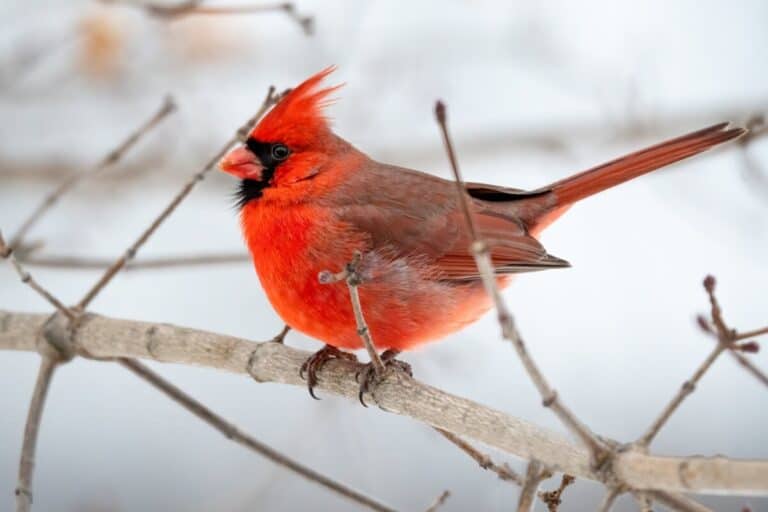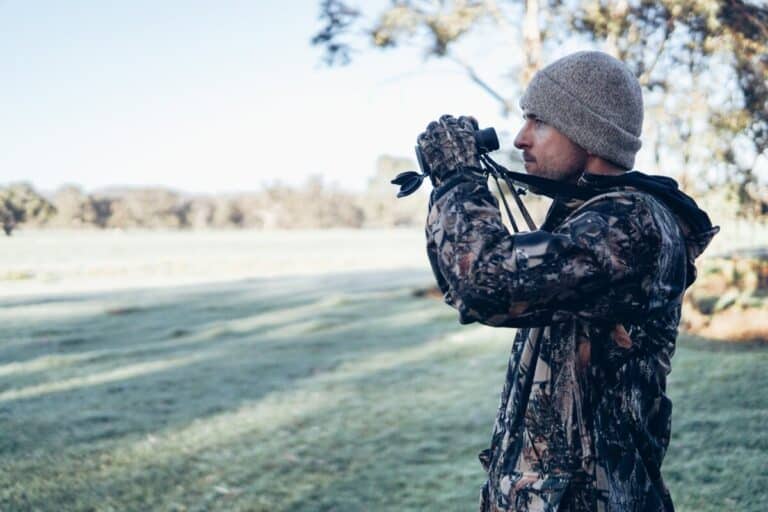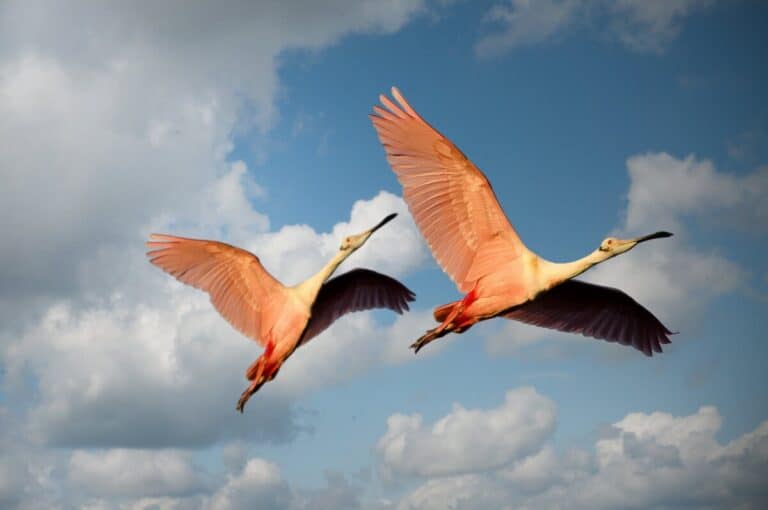Can Birds Swim? (And 3 SURPRISING Ways They Do So!)
We’re reader-supported; we may earn a commission from links in this article.
You may have heard of birds that live in aquatic habitats, but you might start to be curious about this: can birds swim? Given that they have feathers, can they really do so?
I took the time to conduct some deep research on this topic and got a definitive answer. Here’s what I found:
Most birds cannot swim. The majority of birds that live on land cannot swim and may drown easily in water. However, there are aquatic birds that can swim because they have adapted to develop various swimming techniques such as wing-propulsion, foot-propulsion, and plunge-diving.
Birds are indeed cool animals that can swim, especially aquatic birds! Let me tell you more in this article. (I’ll show you some cool videos!) Read on to find out more!
Can Birds Swim? (Continued Full Answer)
We all know that birds can fly, but what about swimming? On this lesser-known subject, let’s explore more on the mechanisms in which birds swim. Specific aquatic birds can swim through 3 main methods:
1. Wing-Propulsion
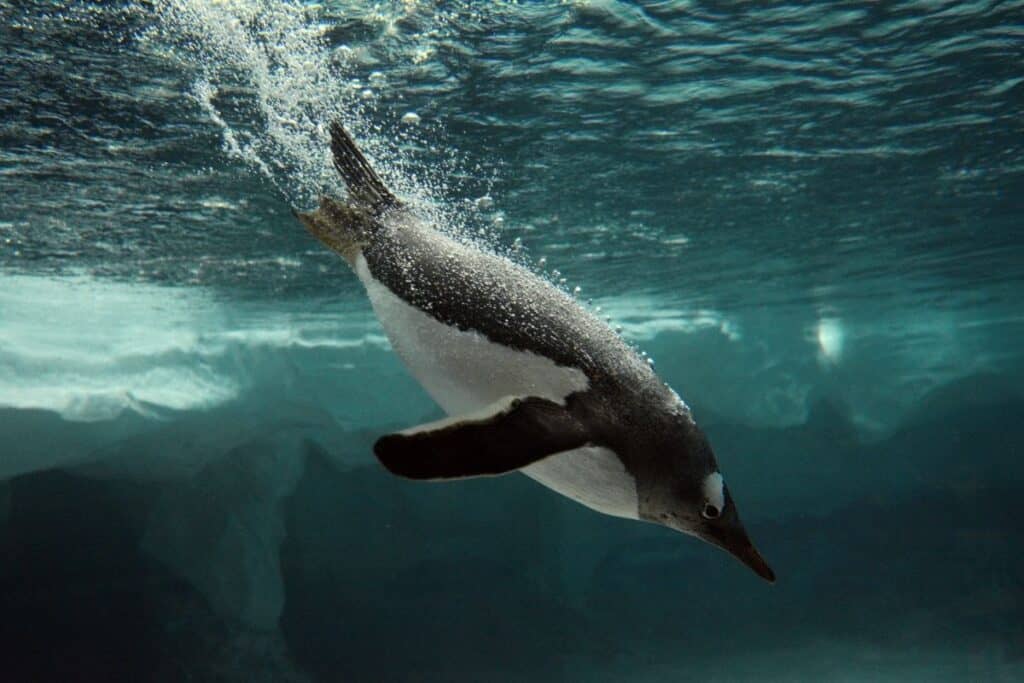
The first type of swimming method is known as wing-propulsion swimming. Examples of birds that do this include penguins and auks. In this method, birds employ the use their arms/wings to propel themselves through the water.
Birds that use wing-propulsion swimming typically have shorter arms compared to other birds as their wings have adapted to swimming in water for the most part of their lives!
Although most birds do not swim using this method, it actually is the fastest method a bird can propel itself through the water. That’s why you see penguins gliding so smoothly through water!
Although birds use their wings to propel themselves for swimming fast in the water, they are often clumsy or even unable to move well on other mediums like on land and in the air.
For example, auks sacrifice their ability to fly well, and penguins cannot even take flight with their short wings!
Did you also know that penguins can swim so fast that they can launch themselves OUT of the water? Don’t believe me? Watch this fascinating video where scientists document this process:
2. Foot-Propulsion
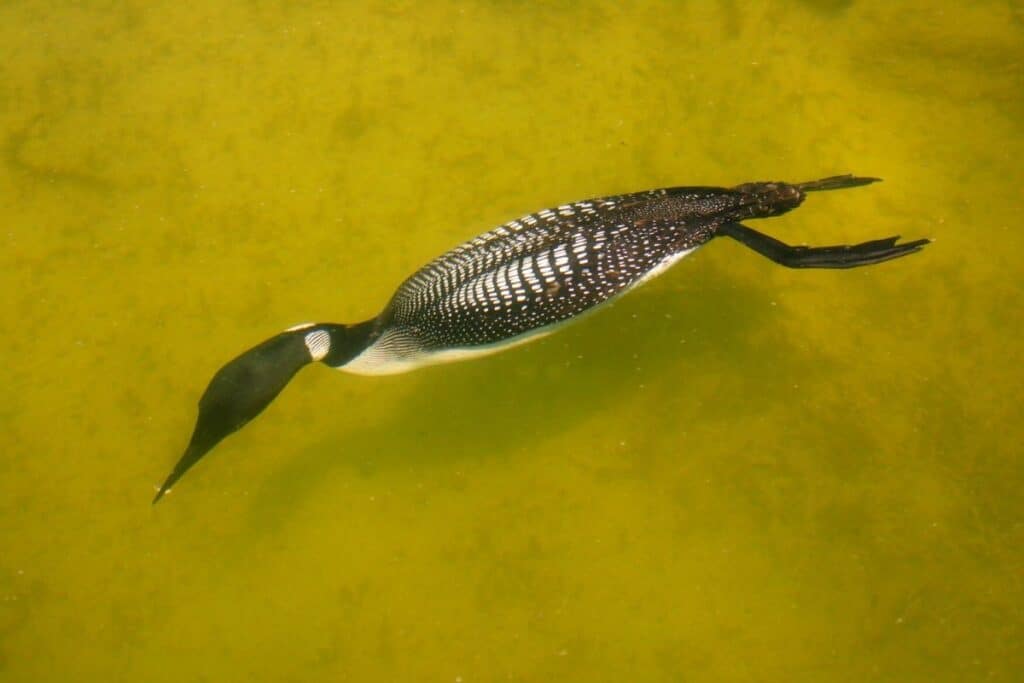
The second type of swimming method birds employ is foot-propulsion. Birds like loons and grebes use their webbed feet to propel themselves through the water.
As their wings are still strong and large enough to take flight, they don’t rely on their wings for propulsion like penguins.
Instead, they keep their wings close to their body and kick their webbed feet behind them in a streamlined manner. This helps them to glide for a fair distance underwater!
However, some birds like petrels can use a combination of both flapping their wings and kicking their feet to ‘fly’ through the water. Here’s a video example of how it happens:
Oh, and here’s how a cormorant does it!
Here’s a cool fact! Fishermen from China have trained and worked with Cormorants to catch fish! They do this by tying a rope to the bird and letting it hunt for fish underwater. I actually witnessed this when I went on a trip to China in the past. Here’s a video explaining all about it!
3. Plunge-Diving
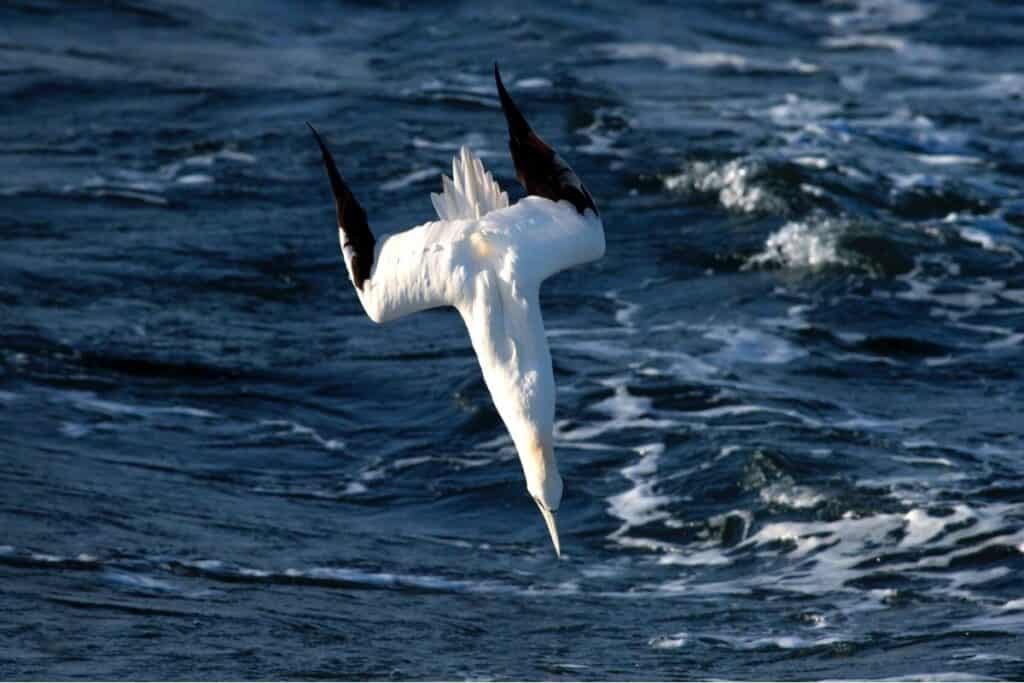
Birds can also perform a high-speed plunge known as plunge-diving. Birds of this type typically gain decent altitude to a decent height above the water surface before performing a high-speed dive through the air and into the water to catch their prey, typically fish in the ocean.
Examples of birds that can perform a plunge dive are gannets and boobies.
These birds only dive to catch their unsuspecting prey in the waters and typically down swim around in the water after the dive. They usually will use their webbed feet to propel themselves upward to the surface for another dive!
Sounds cool? Here’s a video of gannets plunge-diving with some explanation:
Can All Birds Swim?
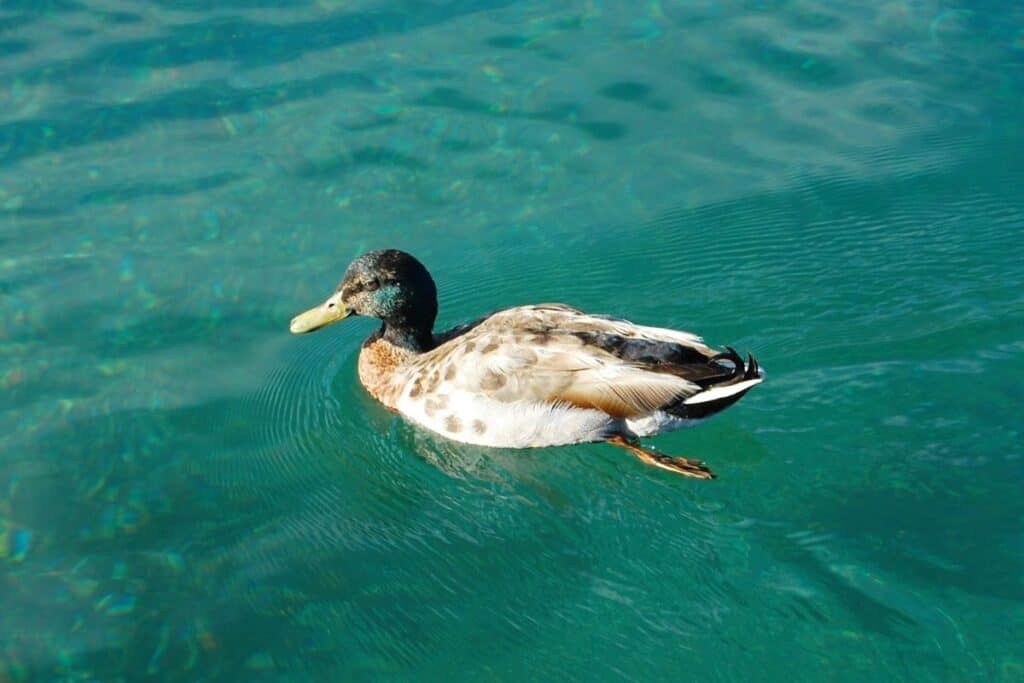
Now we all know that some birds can swim, BUT can all birds swim? Here’s the definitive answer:
Not all birds can swim. Birds that can swim typically have either specially adapted short wings or webbed feet that help them to propel through the water through wing-propulsion and foot-propulsion swimming respectively. Birds that do not have these aquatic adaptations cannot swim in the water.
Which Are Birds That Can Swim?
Here’s a list of birds that can swim:
You’ll see that all of these birds are aquatic birds that have adapted to living in an aquatic habitat, allowing for them to be able to swim!
I’ve put links for each bird, so do click on those links to read their Wikipedia page which has more information on them!
Which Bird Can Swim Well?
Birds that can swim well are aquatic birds. Examples of aquatic birds that can swim well include penguins, puffins, grebes, loons, gannets, petrels, ducks, and cormorants. However, certain land birds like kingfishers are able to swim well when they take a dive to catch fish.
Can Birds Swim Underwater?
Birds can swim underwater. Birds that can swim underwater include aquatic birds such as ducks, cormorants, grebes, loons, pelicans, puffins, penguins, gannets, and petrels. These aquatic birds swim underwater in 3 main ways: wing-propulsion, foot-propulsion, and plunge-diving.
Which Birds Cannot Swim?
Birds that cannot swim are land birds that do not have specific aquatic adaptations like aquatic birds. Land birds do not have adapted wings for propulsion through water, webbed feet that allow them to swim through water, and they have less waterproof feathers than aquatic birds.
Can All Birds Float?
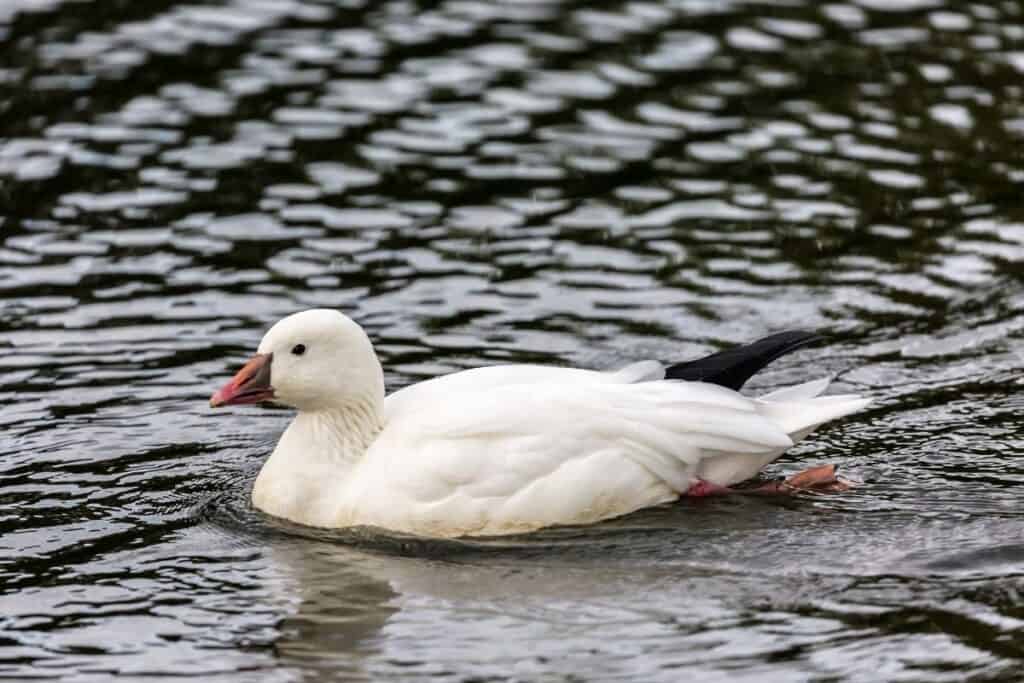
Not all birds can float. Birds that can float include ducks, grebes, and loons that have feathers with barbs that are interlocked in an entire system, trapping air in and providing buoyancy to float. Birds also have buoyant internal air sacs that allow them to float. Non-aquatic birds do not have these traits and cannot float.
Here’s a video explaining how ducks keep themselves afloat and waterproof:
How Do Birds Float On Water?
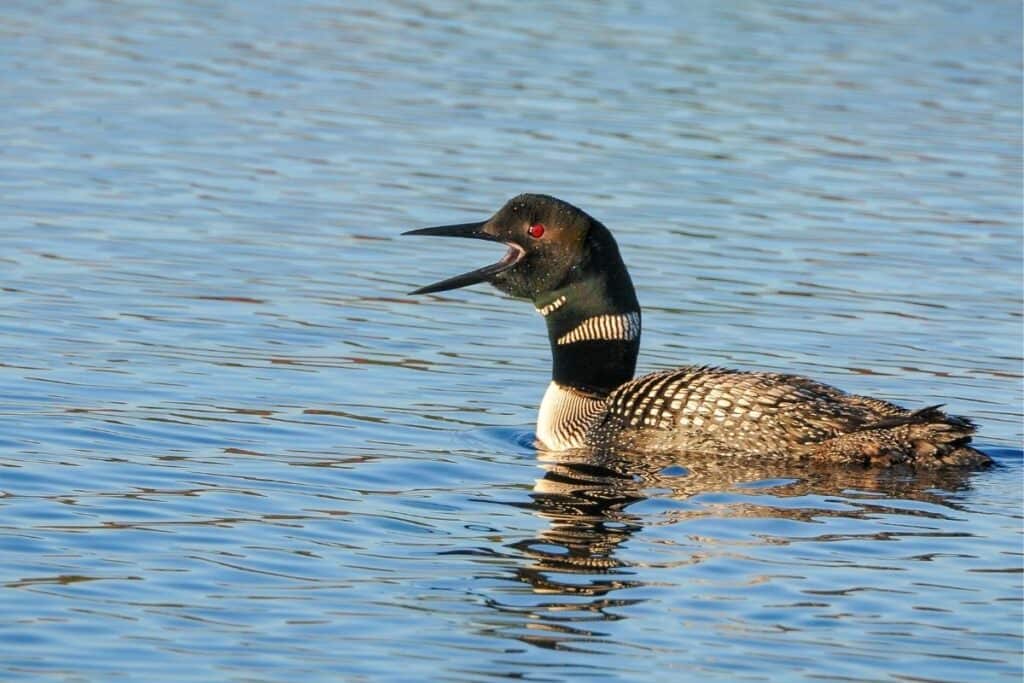
Birds that can float on the water have feathers with barbs that are interlocked in an entire system, trapping air in and providing buoyancy to float. These birds also have buoyant internal air sacs that allow them to float. Examples of birds that can float include ducks, grebes, and loons.
Birds That Can Swim Underwater And Fly
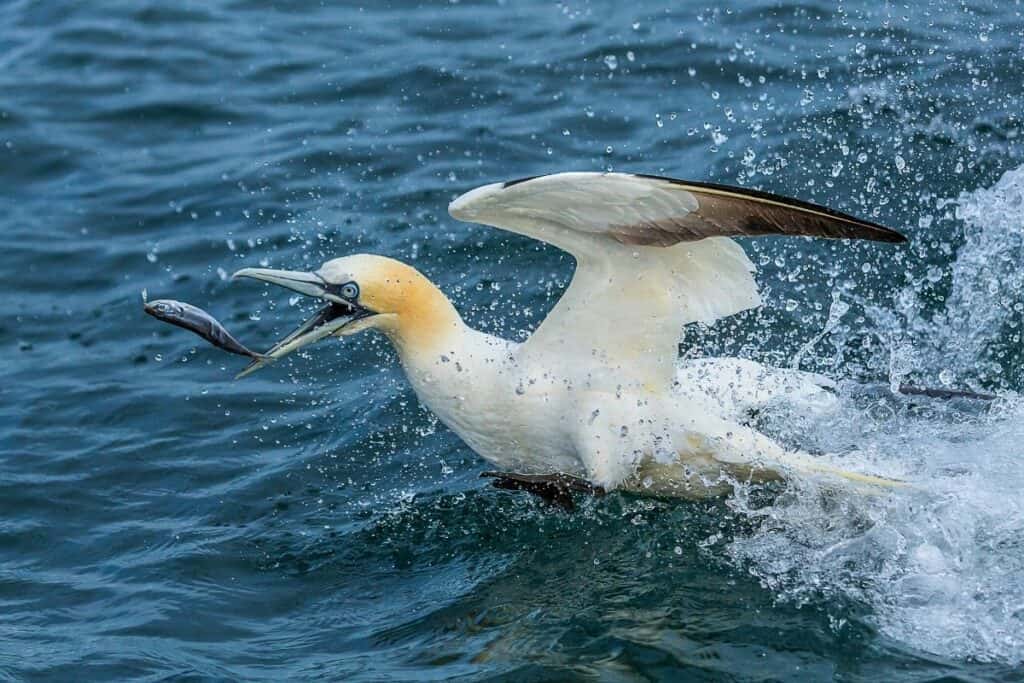
Here’s a list of birds that can both swim underwater and also fly:
- Gannets
- Boobies
- Terns
- Ducks
- Pelicans
- Petrels
- Grebes
- Loons
- Cormorants
Can Eagles Dive Underwater?
Eagles do not dive underwater but they usually catch their prey near the surface of waters. Eagles do not have the aquatic adaptations to swim in water like aquatic birds and therefore are unable to perform dives.
Can All Birds Land On Water?
Not all birds can land on water. Only birds that are able to float on water are able to land on water. Aquatic birds that can float have feathers that contain barbs in a mesh structure that traps air and internal air sacs that enable them to float easily. Non-aquatic birds cannot land on water as they will drown.
Final Thoughts
Now you’ve learned a whole lot about birds swimming and how birds move and survive on and around water!
To summarize, the birds can swim in water with 3 methods: (1) Wing-propulsion, (2) Foot-propulsion, and (3) Plunge-diving.
Hope that this article has helped you understand more about birds and their swimming abilities. Cheers and thanks for reading. Happy birding!
My Recommended Birding Resources:
Hey there, Justin here!
Here’s a list of all my favorite resources, products, and brands I trust and love.
My Celestron Nature DX 8×42 Binoculars: It’s a great budget pair for beginner birders. Highly valued for its price! Read my review.
Safe Paint for Bird Baths Guide: Learn about non-toxic paint for painting bird baths.
Safe Sealers for Bird Baths Guide: Learn which sealers are safe for bird baths.
Safe Paint for Bird Feeders Guide: Learn what special care needs to be taken to paint bird feeders with the right paint.
Safe Paint for Birdhouses Guide: Learn about non-toxic paint for painting birdhouses. (Not the same as bird baths!)
Bird Identification Apps Guide: 2 of my favorite birding apps are Merlin Bird ID, and eBird Mobile! Merlin is great for tracking and identifying birds, and eBird Mobile is great for tracking the birds sighted when birding.
Check out my resources page for the full list of resources I recommend!

Justin Chia
Justin is the founder and author of Birding Outdoors. He is a Nanyang Technological University (NTU) alumnus with a Bachelor of Biological Sciences and a former data analyst.
Now, Justin runs the Birding Outdoors blog full-time, hoping to share his deep love for birds, birding, and nature with others.
To unwind, Justin enjoys gaming and reading.

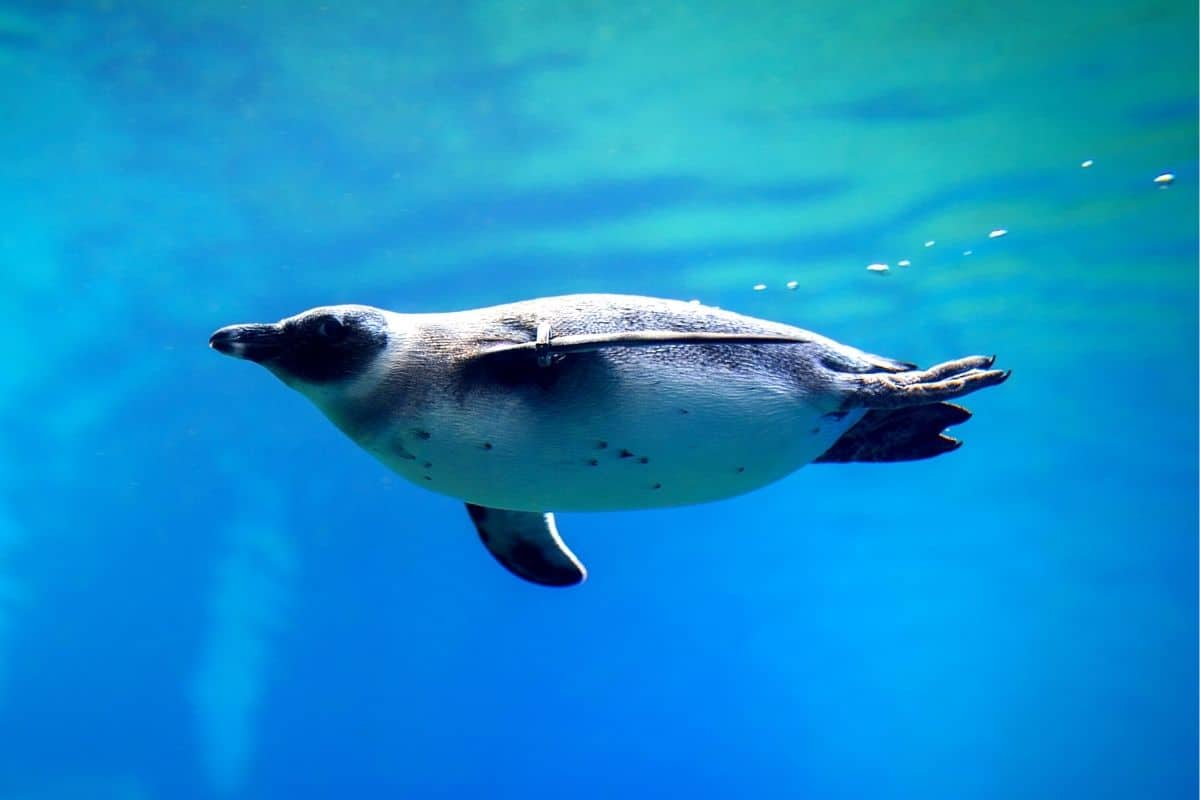
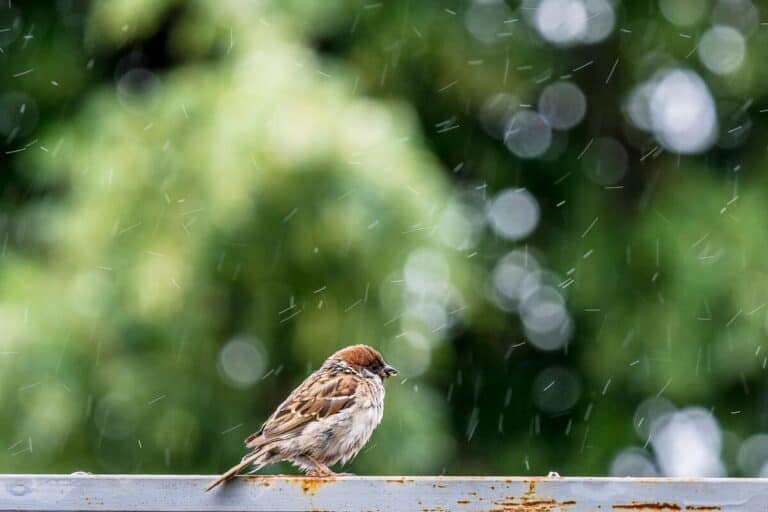
![How Long Do Birds Take To Find A New Feeder? [ANSWERED!]](https://birdingoutdoors.com/wp-content/uploads/2021/06/indigo-3590765_1280-768x512.jpg)
